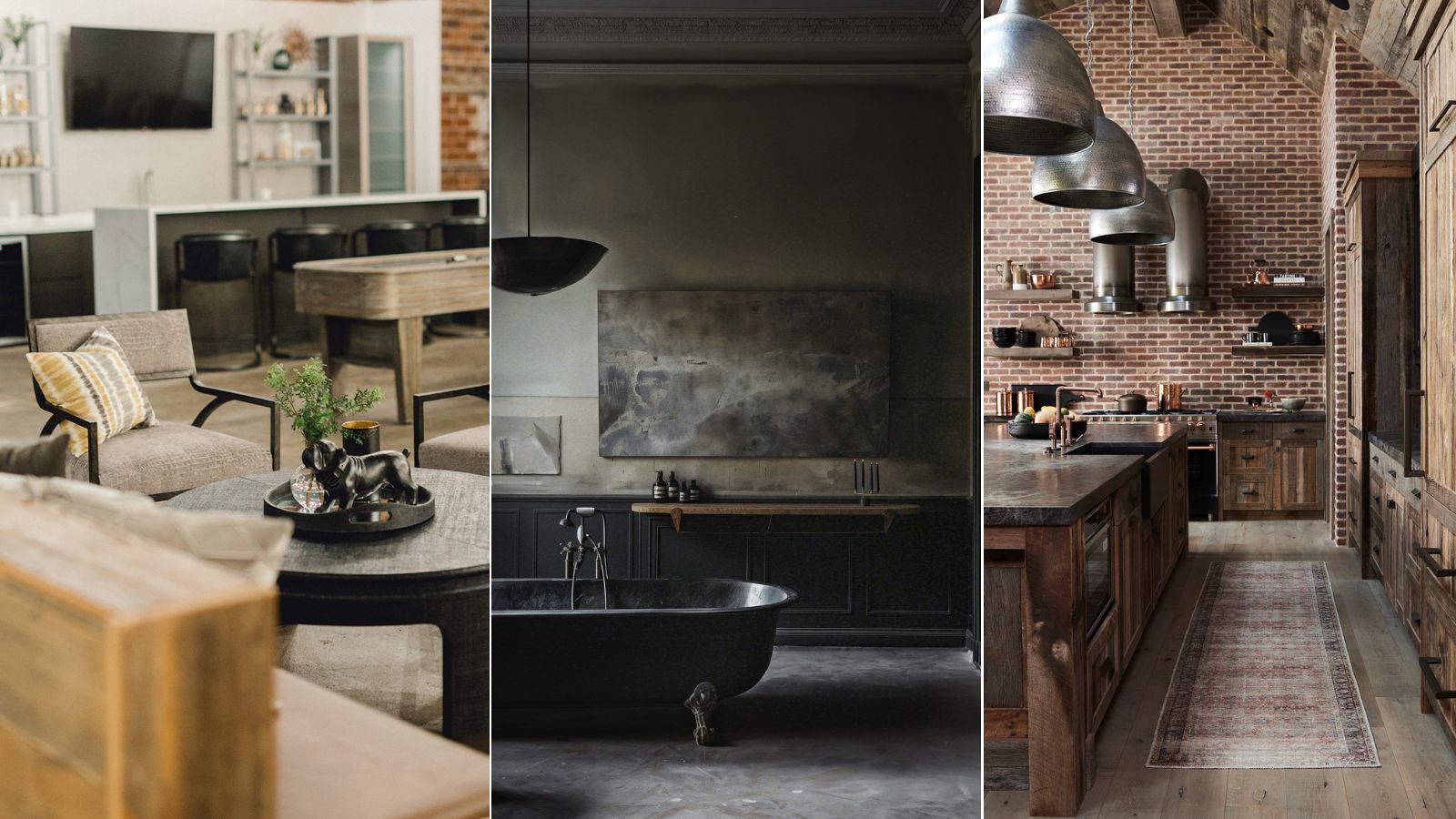
Organic, earthy design features have been on the rise this year, with homeowners and designers alike turning to nature for interior design inspiration. But a surge in searches for metallic finishes and chrome design elements proves that there's still a market for modern, sculptural styles as well. With these two trends in mind, it comes as no surprise that industrial-style interiors – or spaces that blend streamlined features with organic materials – seem to be more popular than ever.
Described by designers as 'rough and raw,' 'ultra-modern,' and 'cool and edgy,' industrial decor isn't just fit for set designs or period properties – instead, it has a place in any home. To hear a bit more about the interior design trend and how to get it down right at home, we spoke with interior designers who love the look. Here's what they had to say.
What is industrial-style design?
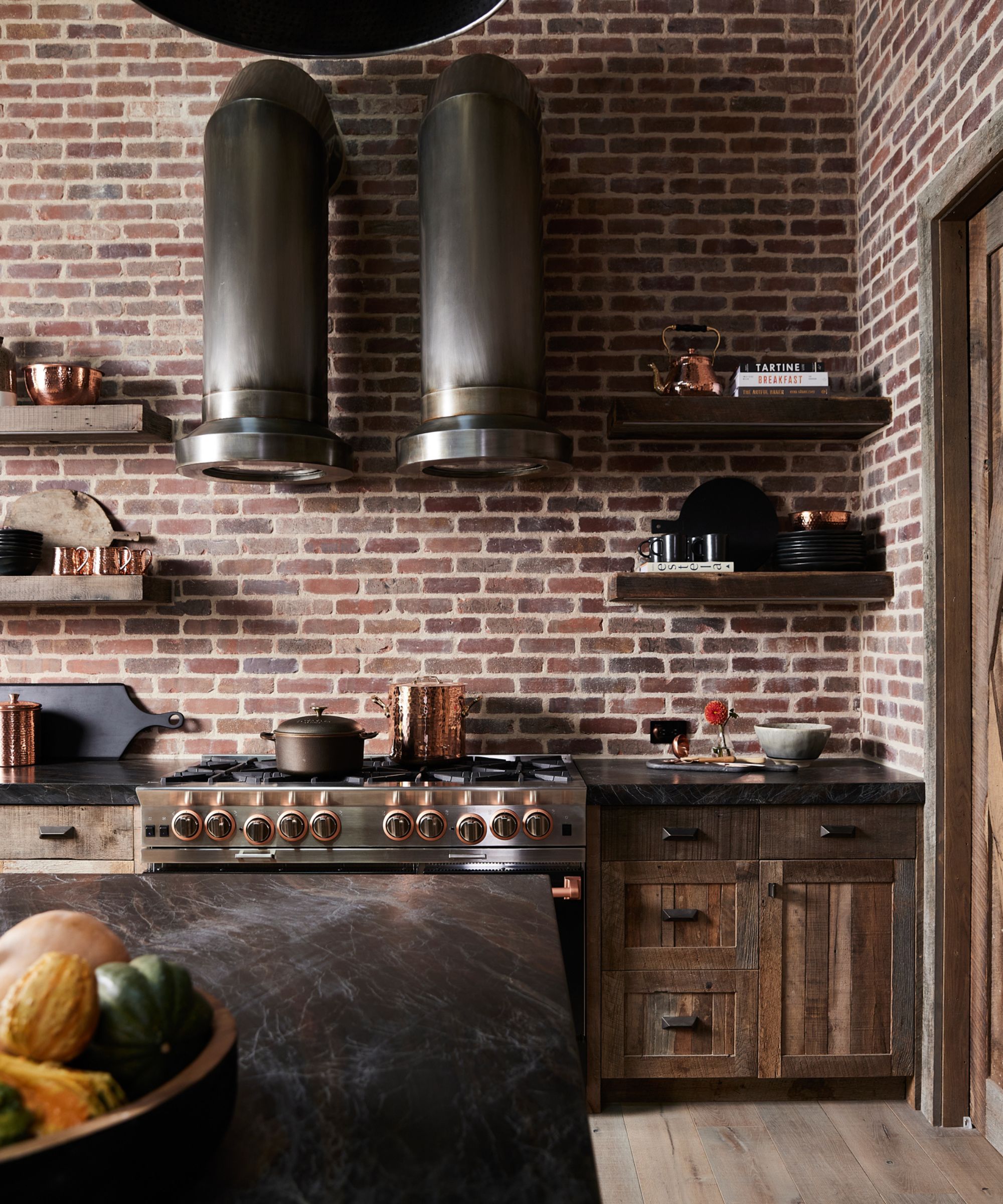
'The industrial style is characterized by its mix of raw, exposed materials and Victorian elegance,' says Mara Rypacek Miller, managing director and founder of Industville. 'Along with key features such as exposed brick walls, metal fixtures, and intricate tile patterns, incorporating handcrafted lighting from traditional materials such as brass or ribbed glass will bring an authenticity and period feel to the design.'
The industrial look is a bit rough around the edges and makes use of natural, and sometimes unfinished, materials. A mix of handmade finishing touches and sleek, streamlined metal accents makes for a composed yet lived-in look. These spaces tend to lean dark and moody, but certainly don't have to be – the style's key principles carry over into any color palette you prefer.
'Consider the overall color palette of the space – a classic Victorian color scheme tended to consist of rich, deep colors such as dark greens and maroons, which combine beautifully with metallic elements,' adds Mara. 'The style's popularity lies in its blend of practicality and timeless charm, drawing inspiration from the innovation of the industrial era and the detailed craftsmanship of the Victorian age.'
Brianna Untener, interior designer and owner of Brianna Scott Interiors, adds that the style's defining features are 'rough and raw,' with 'elements like an exposed column or sleek metal furniture.' She mentions that artwork blends well with the look too, mixing well with the simple, pared-back materials and finishes present in these spaces.
'Industrial-style design works well in city apartments or even a farmhouse type of home. I like to incorporate an industrial style into a space by bringing in cool edgy pieces with metal accents,' says Brianna.
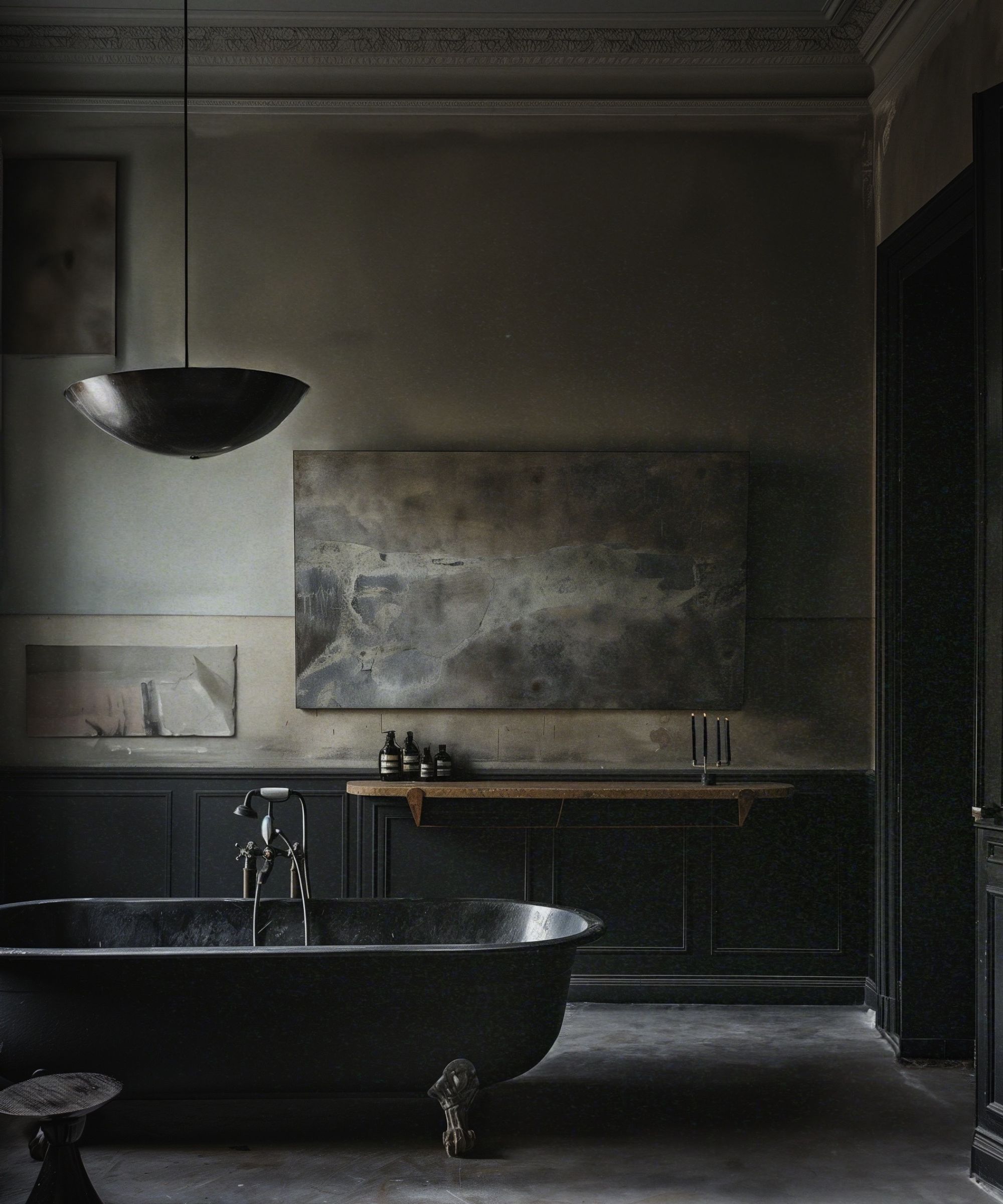
'There are a lot of ways to come at industrial style – start with a palette of brushed steel, cast iron, black gray, leathers and more solid fabrics,' says Christiane Lemieux, interior designer and founder of luxury homeware brand Lemieux et Cie. 'Industrial is more suited for open spaces as it is drawing from factories, lofts, and other architecture converted into living spaces.'
Industrial style can look a bit forced when trying to make it work in a brand-new apartment or home that lacks the look's signature architectural details, adds Christiane. She suggests making use of your home's quirks and intricacies when putting this design style into practice: 'In my own loft space, all the original working parts of the old building are celebrated from the beams to the sprinklers. Hiding them would be costly and unnecessary. If you live in an old factory, celebrate that!' she adds.
Bathrooms, like the one pictured above, are great places to start with industrial style. Already full of metallic finishes and a mixture of sharp and curved lines, they provide the perfect canvas for industrial touches. Jorge Hernandez, head of design at Bathroom Brands Group, says the bathroom is the perfect room to 'experiment' with, no matter the overall style you're looking to achieve.
'Exposed pipework, textural touches, and metal accents are synonymous with industrial design and can be easily incorporated into any bathroom scheme. If you’re designing a contemporary bathroom but want to master the industrial look, opt for heavy metallic finishes, such as brushed brass, stainless steel, brushed bronze, or slate. Brassware and accessories that fuse rough textures with heavy metals help bring an ultra-modern industrial touch to any bathroom space,' says Jorge.
'If you’re designing a more traditional bathroom, look to industrial design for inspiration. Naturally captured in more traditional designs, industrial interiors take inspiration from the Industrial Revolution, making them well-suited to period properties,' he continues.
How to bring the industrial look home
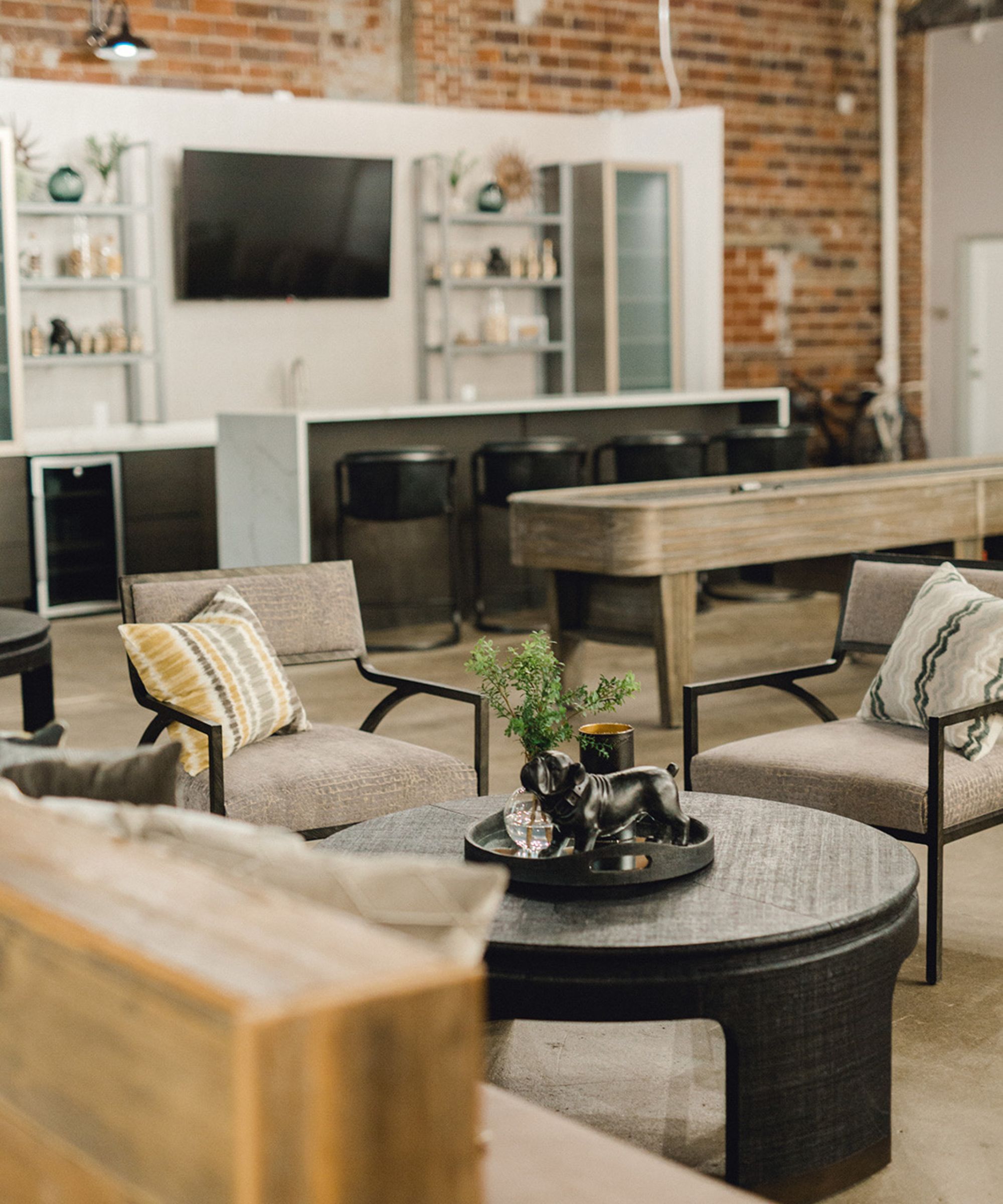
There's no one right way to bring industrial style home, but designers say a few key design features will send you on your way. Jodi Peterman, CEO and owner of Elizabeth Erin Designs, says 'it's all about embracing raw, unfinished elements and seamlessly blending them with modern touches.'
In this project, pictured above, her firm transformed an old truck assembly building into 'refurbished modern apartments' with an expansive community living space. These are some of her top tips for getting the look down.
'One of the most recognizable features of industrial style is exposed architectural elements. Think visible brick walls, exposed steel beams, and uncovered ductwork. These raw components give the space an authentic, rugged feel,' she says. 'Shades of gray, black, white, and earth tones dominate, creating a cohesive and understated look. These colors highlight the raw materials and structural elements.'
The combination of metal and wood finishes is key to the look, she continues, and reclaimed wood makes an even larger impact. Plus, an open floor plan will respect the building's (real or imagined) past as a warehouse or loft while still 'making it perfect for modern living.'
'Incorporating vintage or repurposed items, such as old factory carts, vintage lighting fixtures, and antique furniture adds character and history to the space,' Jennifer concludes.
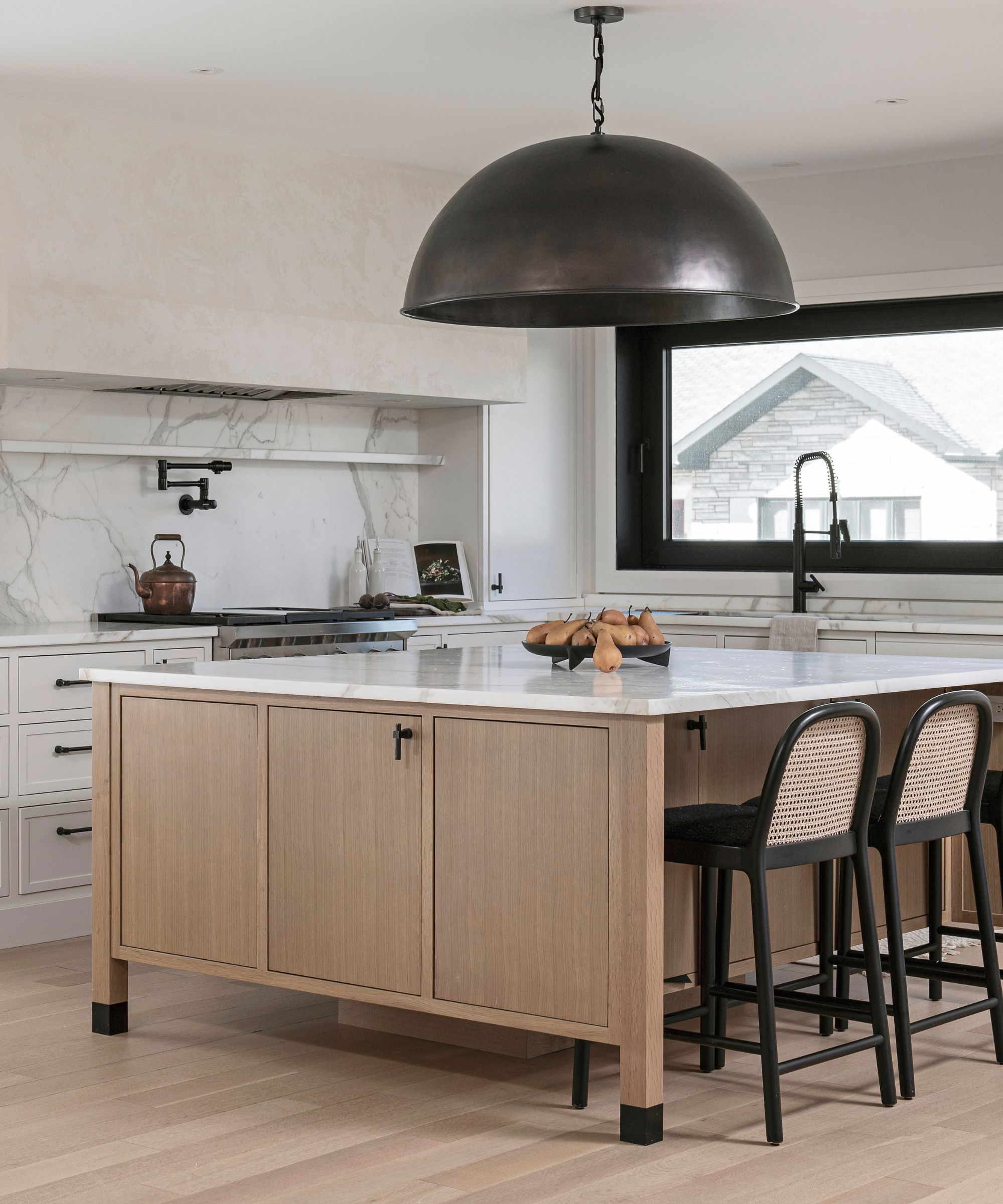
While some are lucky enough to have a space perfectly predisposed for industrial style, others have to work with the spaces they've got. In that case, Chelsea Clark – head of brand at I Love Wallpaper – suggests making minor swaps that'll slowly but surely channel the industrial look.
'The best way to bring industrial style into your home is to start with small changes, such as incorporating industrial-inspired accessories. Introduce metal light fixtures, vintage clocks, distressed wallpaper, or rustic leather furniture to easily switch up your home style, and opt for exposed filament bulbs or Edison lights to enhance the industrial feel,' says Chelsea.
'For a more statement look, opt for industrial finishes, such as concrete or brick, on your floors, walls, and countertops. To decorate, install open shelving with metal brackets and choose furniture with raw, unfinished textures that can add to the overall aesthetic. Mixing these elements with softer textiles like rugs and cushions can help balance the look and add warmth to your space,' she continues.
What do successful industrial spaces look like?
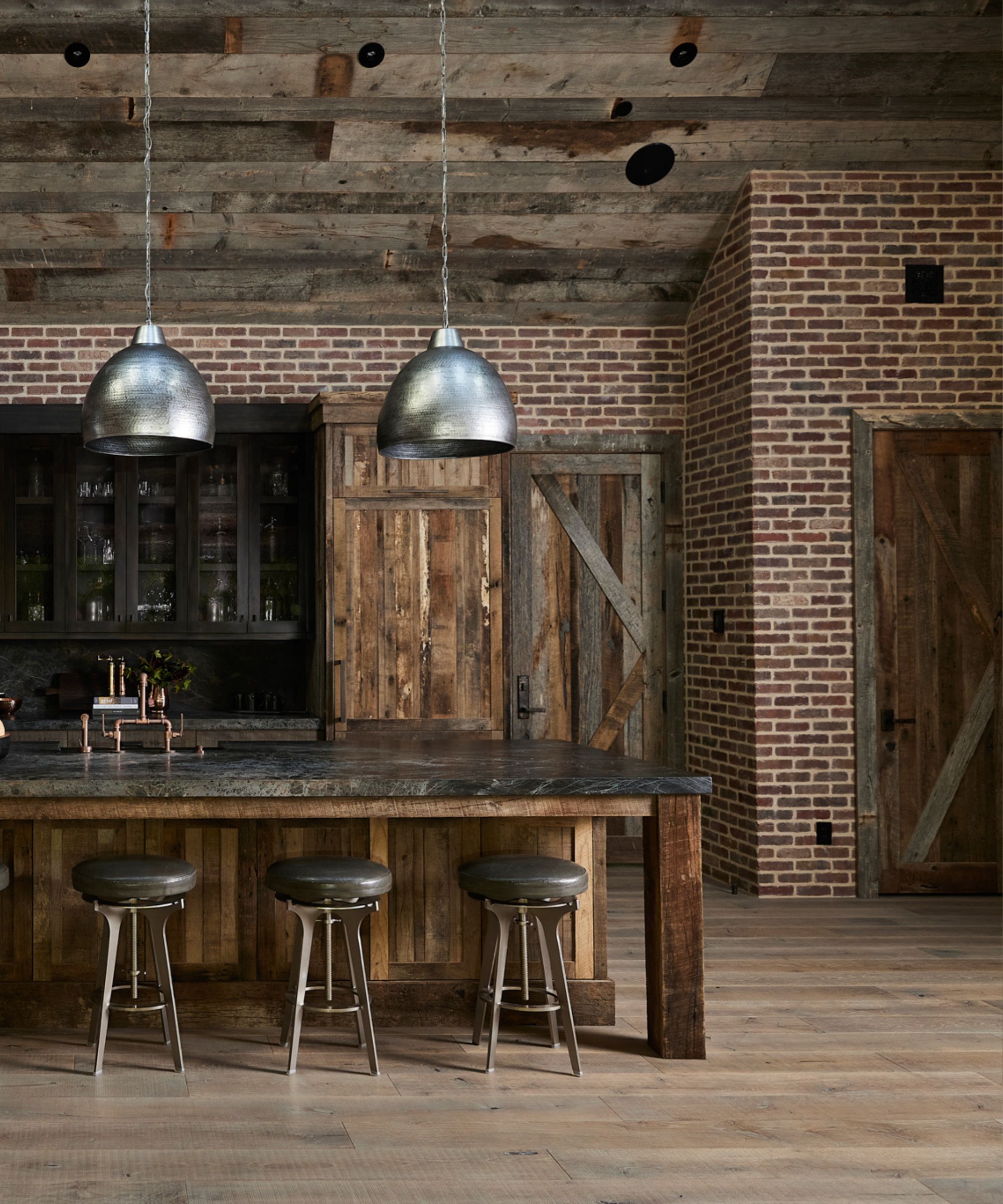
'There are a lot of design elements in this kitchen that are inspired by the historic era,' says Jennifer Chipman, co-founder and principal designer of Park City-based Bond Design Company. 'The custom range hood was fabricated to be reminiscent of an industrial ventilation system, which paired perfectly with the custom range’s mixed metals and the vintage copper faucets that incorporate industrial-era commercial ball valves and plumbing unions.'
Every industrial-style space is unique, but the most successful spaces blend the old and the new and channel more transitional decorating ideas. In this space, the exposed brick walls and natural wood ceiling ensure the room looks natural and lived-in, and unique light fixtures and furniture take the design scheme to the next level. Reminiscent of farmhouse style, but quite a bit moodier, this look is one that's truly meant to last.
Industrial interiors are moody, edgy, and built to last, and it's no shock they're on trend now. In 2024, designers and homeowners are injecting more personality than ever into their spaces, and industrial is the ultra-modern (yet still historic) style that fits the bill.







